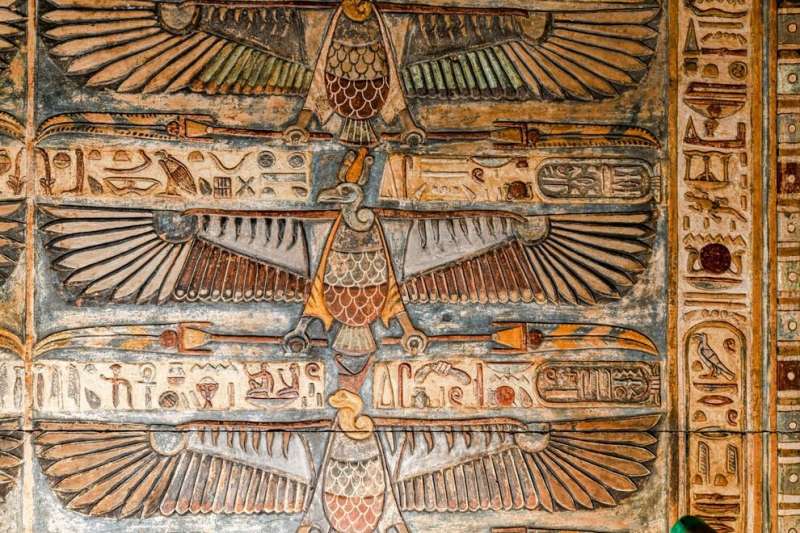
German and Egyptian researchers have discovered a series of colorful ceiling frescoes in the Temple of Khnum at Esna. There are depictions of the Upper-Egyptian vulture goddess Nekhbet and the Lower-Egyptian serpent goddess Wadjet in the central section of the ceiling. Both are depicted as vultures. The Lower-Egyptian crown is topped with a cobra and it can be seen that Nekhbet has the head of a vulture.
Researchers from the Institute for Ancient Near Eastern Studies at the University of Tübingen and the Egyptian Ministry of Tourism and Antiquities have been working to uncover the reliefs, painting and inscriptions in the temple.
Temples and ancient depictions of the gods were often painted in brilliant colors, but these have faded or even disappeared as a result of external influences. The Temple of Khnum at Esna has been covered in dirt and soot for almost 2,000 years, and this has helped to conserve the colors.
The depiction of Two Ladies, Nekhbet and Wadjet, which has now been revealed, was previously unknown to experts.
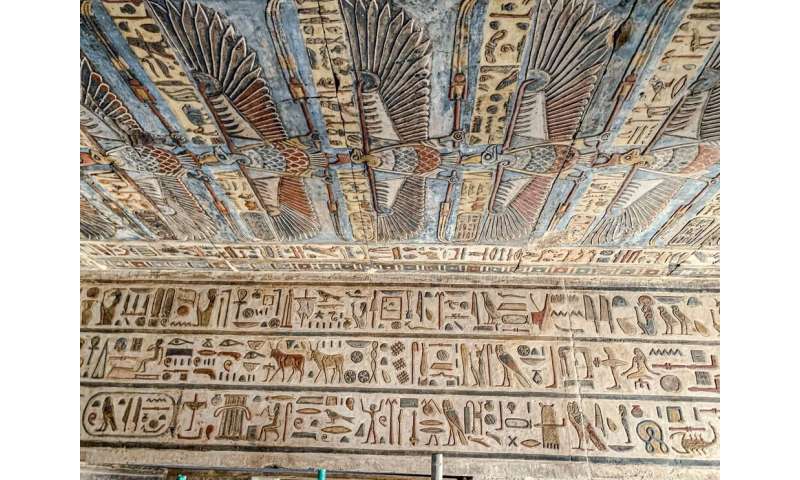
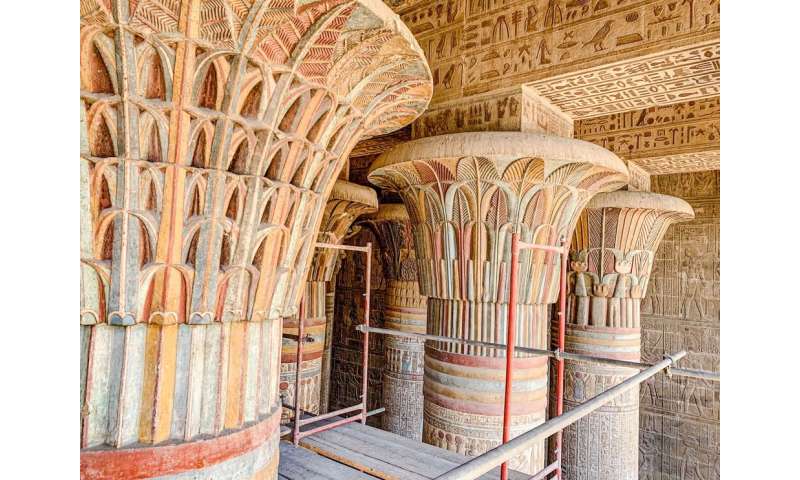
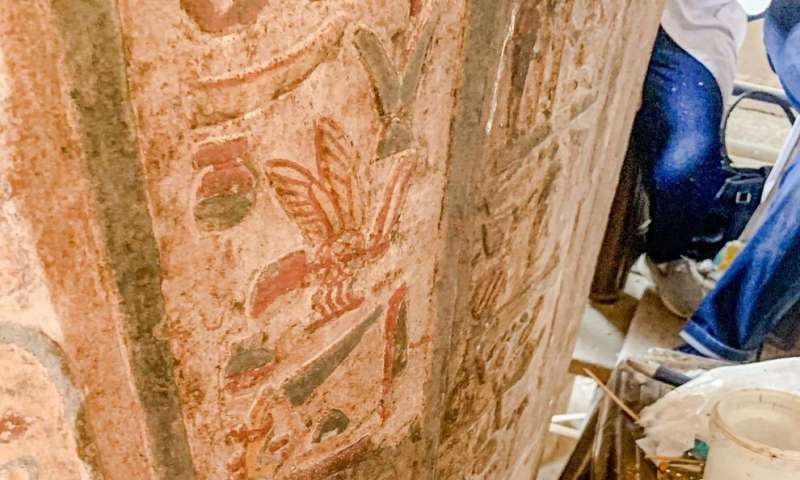





A team headed by Ahmed Emam has cleaned and documented more than half of the ceilings and eight of the columns. The central section of the ceiling has been cleaned of soot.
For the first time, we can see all the decorative elements in relation to one another, says Christian Leitz.
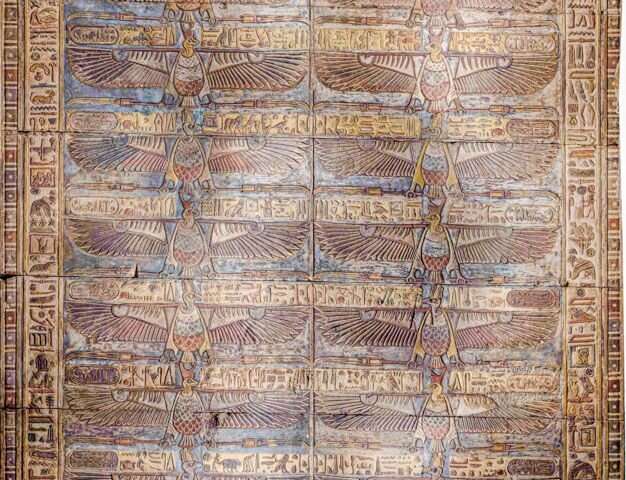
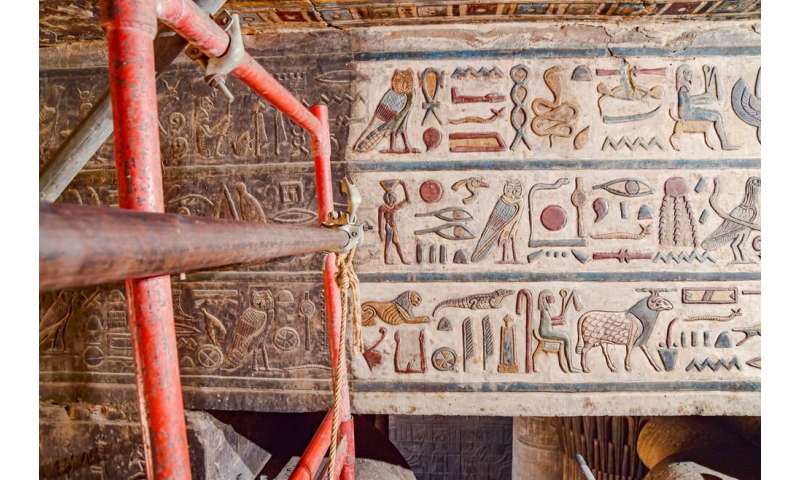




The temple at Esna, 60 kilometers south of Luxor, is complete and consists of 37 meters in length, 20 meters in width and 15 meters in height. The location in the center of the city is a possible reason why the vestibule was not used as a source of stone for construction during the industrialization of Egypt. The pronaos was viewed as the ideal of Ancient Egyptian temple architecture by specialist circles as early as Napoleon's time.
Citation: Spectacular ceiling frescoes discovered in the Temple of Khnum at Esna (2022, May 17) retrieved 17 May 2022 from https://phys.org/news/2022-05-spectacular-ceiling-frescoes-temple-khnum.html This document is subject to copyright. Apart from any fair dealing for the purpose of private study or research, no part may be reproduced without the written permission. The content is provided for information purposes only.